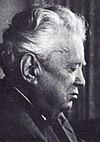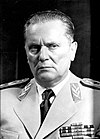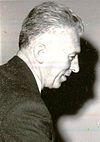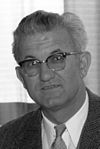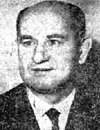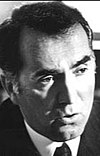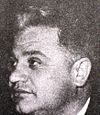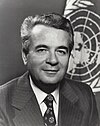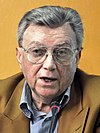List of heads of state of Yugoslavia
This article lists the heads of state of Yugoslavia from the creation of the Kingdom of Serbs, Croats and Slovenes (Kingdom of Yugoslavia) in 1918 until the breakup of the Socialist Federal Republic of Yugoslavia in 1992.The Kingdom of Yugoslavia was a hereditary monarchy ruled by the House of Karađorđević from 1918 until World War II. After the war, SFR Yugoslavia was headed first by Ivan Ribar, the President of the Presidency of the National Assembly (the parliamentary speaker), and then by President Josip Broz Tito from 1953 up until his death in 1980.[1] Afterwards, the Presidency of Yugoslavia assumed the role of a collective head of state,[2] with the title of President of the Presidency of Yugoslavia rotating among the representatives of the republics and autonomous provinces that composed the Presidency. However, until 1990 the position of leader of the League of Communists of Yugoslavia was usually the most powerful position, most often coinciding with the President of the Presidency. With the introduction of multi-party system in 1990, individual republics elected their own heads of state, but the country's head of state continued to rotate among appointed representatives of republics and autonomous provinces until the country dissolved two years later.
Kingdom of Yugoslavia
| King of Yugoslavia | |
|---|---|
| Краљ Југославије Kralj Jugoslavije | |
 | |
 | |
| Details | |
| Style | His Majesty |
| First monarch | Peter I |
| Last monarch | Peter II |
| Formation | 1 December 1918 |
| Abolition | 29 November 1945 |
| Residence | Royal Compound, Belgrade |
| Appointer | Hereditary |
| Pretender(s) | Line of succession |
The Kingdom of Serbs, Croats and Slovenes was created by the unification of the Kingdom of Serbia (the Kingdom of Montenegro had united with Serbia five days previously, while the regions of Kosovo, Vojvodina and Vardar Macedonia were parts of Serbia prior to the unification) and the provisional State of Slovenes, Croats and Serbs (itself formed from territories of the former Austria-Hungary) on 1 December 1918.
Until 6 January 1929, the Kingdom of Serbs, Croats and Slovenes was a parliamentary monarchy. On that day, King Alexander abolished the Vidovdan Constitution (adopted in 1921), prorogued the National Assembly and introduced a personal dictatorship (so-called 6 January Dictatorship).[3] He officially renamed the country Kingdom of Yugoslavia on 3 October 1929 and, although granted the 1931 Constitution, continued to rule as a de facto absolute monarch until his assassination on 9 October 1934, during a state visit to France. After his assassination, parliamentary monarchy was put back in place.
The Kingdom of Yugoslavia was defeated and occupied on 17 April 1941 after the German invasion. The monarchy was formally abolished and the republic proclaimed on 29 November 1945.
All monarchs were members of the Karađorđević dynasty. Peter I, previously King of Serbia (since the May Coup in 1903 against the Obrenović dynasty), was proclaimed King by representatives of South Slav states. The royal family continued through his son (Alexander I) and his grandson (Peter II).
List
| Name | Portrait | Birth | Marriages | Death | Succession right | Note |
|---|---|---|---|---|---|---|
| Peter I 1 December 1918 – 16 August 1921 (2 years, 259 days) |
 |
29 June 1844 Belgrade Son of Alexander Karađorđević, Prince of Serbia and Persida Nenadović |
Princess Zorka of Montenegro 30 July 1883 5 children |
16 August 1921 Belgrade aged 77 |
Previously King of Serbia (June 15, 1903 – December 1, 1918), proclaimed King by representatives of South Slav states |
Held the title "King of Serbs, Croats and Slovenes". Prince Alexander served as regent in his final years. |
| Alexander 16 August 1921 – 9 October 1934 (13 years, 55 days) |
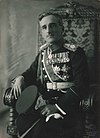 |
16 December 1888 Cetinje Son of Peter I and Princess Zorka of Montenegro |
Maria of Yugoslavia 8 June 1922 3 children |
9 October 1934 Marseilles aged 45 |
Son of the preceding | Changed title to "King of Yugoslavia" in 1929. Assassinated in Marseilles. |
| Paul 9 October 1934 – 27 March 1941 (6 years, 170 days) |
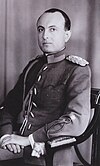 |
27 April 1893 Saint Petersburg Son of Prince Arsen of Yugoslavia and Aurora Pavlovna Demidova |
Olga of Greece and Denmark 22 October 1923 3 children |
14 September 1976 Paris aged 83 |
Cousin of the preceding | Served as regent for Peter II, together with Radenko Stanković and Ivo Perović. |
| Peter II 9 October 1934 – 29 November 1945 (11 years, 52 days) |
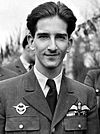 |
6 September 1923 Belgrade Son of Alexander and Maria of Yugoslavia |
Alexandra of Greece and Denmark 20 March 1944 1 child |
3 November 1970 Denver aged 47 |
Son of the preceding | Reigned under the regency until the coup d'état on 27 March 1941; exiled on 17 April 1941 and deposed on 29 November 1945. |
SFR Yugoslavia
| President of Yugoslavia | |
|---|---|
| Председник Југославије Predsednik Jugoslavije | |
 | |
| Residence | White Palace, Belgrade |
| Precursor | King of Yugoslavia |
| Formation | 29 December 1945 |
| First holder | Ivan Ribar |
| Final holder | Stjepan Mesić |
| Abolished | 5 December 1991 |
| Superseded by | President of Croatia President of Serbia and Montenegro Chairman of the Presidency of Bosnia and Herzegovina President of North Macedonia President of Slovenia |
After the German invasion and fragmentation of the Kingdom of Yugoslavia, partisans formed the Anti-Fascist Council for the National Liberation of Yugoslavia (AVNOJ) in 1942. On 29 November 1943 an AVNOJ conference proclaimed the Democratic Federal Yugoslavia, while negotiations with the royal government in exile continued. After the liberation of Belgrade on 20 October 1944, the Communist-led government on 29 November 1945 declared King Peter II deposed and proclaimed the Federal People's Republic of Yugoslavia.
From 1945 to 1953, the President of the Presidency of the National Assembly was the office of the Yugoslav head of state. The post was held by Ivan Ribar.
From 1953 to 1963, Josip Broz Tito simultaneously held the offices of the President of the Republic (head of state) and the President of the Federal Executive Council (head of government). The 1963 Constitution renamed the state as Socialist Federal Republic of Yugoslavia, and divided the office of the President of the Republic from that of President of the Federal Council, even if the President of the Republic retained the power to preside over the Government when it met, on the French model.[4]
The 1974 Constitution provided for a collective federal presidency, consisting of representatives of the six republics, the two autonomous provinces within Serbia and (until 1988) the President of the League of Communists, with a chairman in rotation. Notwithstanding, this constitutional provision was suspended because Tito was elected by parliament as President for Life,[5] who thus chaired the collective presidency on a permanent basis. After his death in 1980, one member was annually elected President of the Presidency and performed many of the personal duties expected of a president, though the collective presidency as a whole remained head of state.
List
| No. | Portrait | Name (Birth–Death) |
Representing | Term of office | Political party | Note | ||
|---|---|---|---|---|---|---|---|---|
| Took office | Left office | Time in office | ||||||
| President of the Presidency of the National Assembly 1945–1953 | ||||||||
| 1 | Ivan Ribar (1881–1968) | N/A | 29 December 1945 | 14 January 1953 | 7 years, 16 days | SKJ | Communist Party of Yugoslavia (KPJ) reformed and renamed League of Communists of Yugoslavia (SKJ) in 1952. | |
| President 1953–1980 | ||||||||
| 1 | Josip Broz Tito (1892–1980) | N/A | 14 January 1953 | 4 May 1980 † | 27 years, 111 days | SKJ | Declared president for life in 1974. | |
| Presidents of the Presidency 1980–1992 | ||||||||
| 1 | Lazar Koliševski (1914–2000) | Macedonia | 4 May 1980 | 15 May 1980 | 11 days | SKJ | . | |
| 2 | Cvijetin Mijatović (1913–1993) | Bosnia and Herzegovina | 15 May 1980[6] | 15 May 1981 | 1 year | SKJ | . | |
| 3 | Sergej Kraigher (1914–2001) | Slovenia | 15 May 1981 | 15 May 1982 | 1 year | SKJ | . | |
| 4 | Petar Stambolić (1912–2007) | Serbia | 15 May 1982 | 15 May 1983 | 1 year | SKJ | . | |
| 5 | Mika Špiljak (1916–2007) | Croatia | 15 May 1983 | 15 May 1984 | 1 year | SKJ | . | |
| 6 | Veselin Đuranović (1925–1997) | Montenegro | 15 May 1984 | 15 May 1985 | 1 year | SKJ | . | |
| 7 | Radovan Vlajković (1924–2001) | SAP Vojvodina | 15 May 1985 | 15 May 1986 | 1 year | SKJ | . | |
| 8 | Sinan Hasani (1922–2010) | SAP Kosovo | 15 May 1986 | 15 May 1987 | 1 year | SKJ | . | |
| 9 | Lazar Mojsov (1920–2011) | Macedonia | 15 May 1987 | 15 May 1988 | 1 year | SKJ | . | |
| 10 | Raif Dizdarević (born 1926) | Bosnia and Herzegovina | 15 May 1988 | 15 May 1989 | 1 year | SKJ | . | |
| 11 | Janez Drnovšek (1950–2008) | Slovenia | 15 May 1989 | 15 May 1990 | 1 year | SKJ LDS | Joined Liberal Democracy of Slovenia in February 1990. | |
| 12 | Borisav Jović (1928–2021) | Serbia | 15 May 1990 | 15 May 1991 | 1 year | SPS | SKJ dissolved in February 1990. In Serbia the party was succeeded by the SPS. | |
| – | Sejdo Bajramović (1927–1993) Acting | AP Kosovo | 16 May 1991 | 30 June 1991 | 45 days | SPS | Acting president. | |
| 13 | Stjepan Mesić (born 1934) | Croatia | 30 June 1991 | 5 December 1991 | 158 days | HDZ | Last president of Yugoslavia. | |
| – | Branko Kostić (1939–2020) Acting | Montenegro | 5 December 1991 | 15 June 1992 | 193 days | DPS | Acting president. Installed by Serbia and Montenegro. | |
Timeline

See also
- List of deputy heads of state of Yugoslavia
- Prime Minister of Yugoslavia
- Leader of the League of Communists of Yugoslavia
- President of Serbia and Montenegro
- Presidency of Bosnia and Herzegovina
- President of Croatia
- President of Montenegro
- President of North Macedonia
- President of Serbia
- President of Slovenia
References
- ^ Michael Dobbs (5 May 1980). "President Tito Dies". The Washington Post. Retrieved 12 August 2021.
- ^ Michael Dobbs (5 May 1980). "Collective Presidency Follows 35 Years of Rule by One Man". The Washington Post. Retrieved 12 August 2021.
- ^ Edwin Leland James (7 January 1929). "KING OF YUGOSLAVIA ASSUMES ALL POWER". The New York Times. Retrieved 12 August 2021.
- ^ Constitution of 1963
- ^ Malcolm Browne (17 May 1974). "Tito Is Named President for Life Under New Government Setup". The New York Times. Retrieved 29 August 2022.
- ^ Michael Dobbs (16 May 1980). "New President Takes Up Post In Yugoslavia". The Washington Post. Retrieved 12 August 2021.


